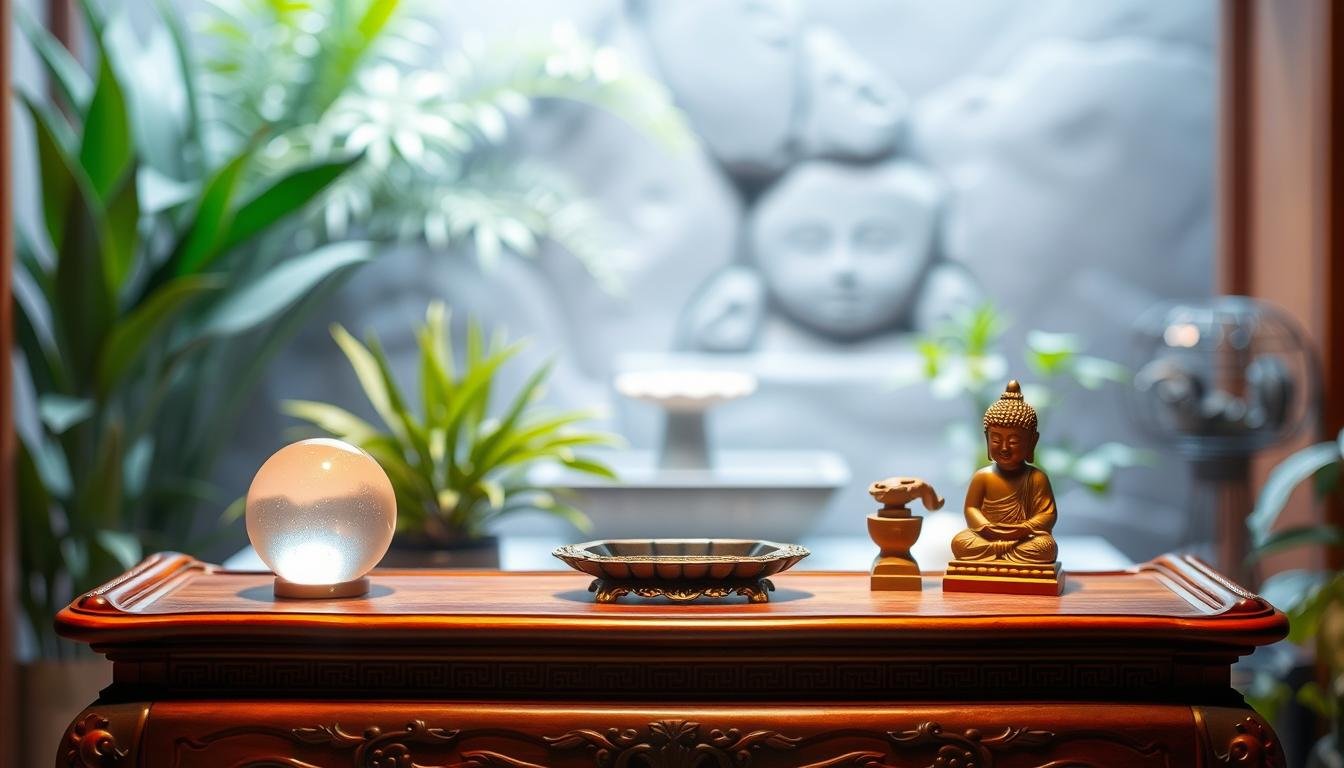Creating a sacred space in your home can significantly enhance the energy and promote a sense of calm. Building an altar is a powerful way to achieve this, by incorporating principles from feng shui and sacred geometry.
An altar serves as a focal point for your intentions and prayers, helping to manifest your desires. By understanding the purpose of sacred altars and determining your altar’s intention, you can create a space that nurtures positive energy.
Key Takeaways
- Understand the purpose and benefits of creating a sacred altar
- Learn how to determine your altar’s intention
- Discover the importance of feng shui and sacred geometry in altar construction
- Find out how to maintain the energy of your altar
- Explore tips for creating a harmonious and balanced sacred space
Understanding the Purpose of Sacred Altars
Altars have long been revered as sacred spaces where individuals can connect with their spirituality and the world around them. These dedicated areas serve as a focal point for spiritual practices, meditation, and personal reflection.
The Spiritual Significance of Altars Across Cultures
Sacred altars have been a part of various cultures and spiritual traditions for centuries. From the elaborate altars found in Catholic churches to the simple, yet profound, altars in Buddhist temples, these structures hold deep spiritual significance. They are often used to honor deities, ancestors, or significant life events, creating a tangible connection to the divine or the universe.
How Altars Function as Energy Focal Points
Altars function as energy focal points by concentrating the user’s intention and energy into a specific space. This concentration can amplify the user’s prayers, meditations, or rituals, making their spiritual practices more effective. By creating a dedicated space for spiritual practice, individuals can better connect with their inner selves and the energies they wish to manifest.
Benefits of Creating a Personal Sacred Space
Creating a personal sacred space or altar offers numerous benefits, including a deeper sense of spirituality, improved mental clarity, and a greater sense of calm and well-being. It provides a private area for introspection, meditation, and connection with one’s higher self or the universe. By having a dedicated space for spiritual practice, individuals can enhance their spiritual growth and overall quality of life.
The Connection Between Altars, Feng Shui, and Sacred Geometry
Creating an altar that resonates with positive energy involves understanding the interconnectedness of feng shui and sacred geometry. These ancient practices have been used for centuries to enhance the spiritual and energetic qualities of sacred spaces. By integrating the principles of feng shui and sacred geometry, we can build altars that not only amplify our intentions but also create a harmonious and balanced environment.
Basic Principles of Feng Shui for Energy Flow
Feng shui is an ancient Chinese philosophy that focuses on arranging environments to maximize the flow of positive energy, or “chi.” When applying feng shui to altar construction, we consider the placement, orientation, and elements used. For instance, the direction an altar faces can significantly impact its energy. In feng shui, the Bagua map is a tool used to map the energy of a space, dividing it into areas that correspond to different aspects of life, such as wealth, relationships, and career.
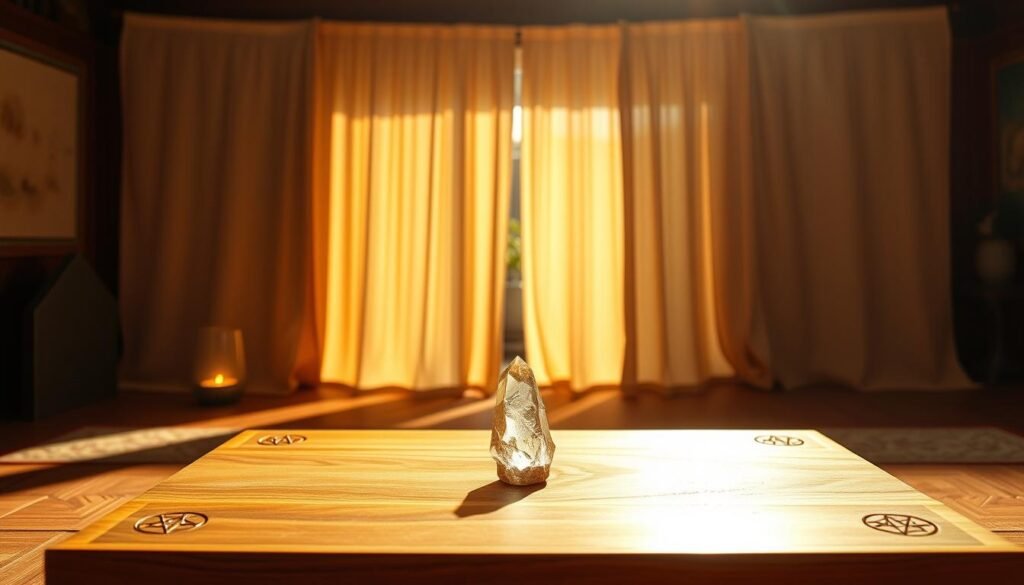
Introduction to Sacred Geometry Patterns
Sacred geometry involves the use of geometric patterns and shapes that reflect the harmony and unity found in nature. These patterns are believed to hold spiritual significance and can be used to enhance the energy of an altar. Common sacred geometry patterns include the Flower of Life, mandalas, and the Seed of Life. Incorporating these patterns into altar design can create a visually appealing and energetically potent space.
How These Disciplines Enhance Altar Energy
When combined, feng shui and sacred geometry can significantly enhance the energy of an altar. By carefully selecting the location and design of an altar based on feng shui principles and incorporating sacred geometry patterns, we can create a powerful focal point for our intentions. The table below illustrates how different elements can be used in altar construction to enhance its energy.
| Element | Feng Shui Significance | Sacred Geometry Pattern |
|---|---|---|
| Wood | Represents growth and new beginnings | Flower of Life |
| Fire | Symbolizes energy and transformation | Mandalas |
| Earth | Embodies stability and grounding | Seed of Life |
By understanding and applying the principles of feng shui and sacred geometry, we can create altars that are not only beautiful but also powerful tools for manifesting our desires and enhancing our spiritual practices.
Determining Your Altar’s Intention
Defining your altar’s intention is a crucial step in creating a focused and effective energy center. This intention serves as the foundation for your altar’s energy and guides the selection of elements and objects that will be placed upon it.
Setting Clear Energetic Goals
To set clear energetic goals, you must first identify what you wish to achieve through your altar. This could range from enhancing your meditation practice to attracting abundance or supporting healing processes. By clarifying your goals, you create a clear direction for your altar’s energy.
Different Types of Altars and Their Purposes
Altars can be categorized into various types based on their intended use. Understanding these categories can help you determine the specific purpose of your altar.
Meditation Altars
Meditation altars are designed to enhance your meditation practice, creating a peaceful and focused environment. These altars often include elements like candles, incense, and serene imagery.
Abundance Altars
Abundance altars are intended to attract prosperity and wealth. They typically feature items like crystals, green candles, and symbols of abundance.
Healing altars are created to support physical, emotional, or spiritual healing. These altars may include elements like healing crystals, soothing colors, and calming scents.
Ancestral Altars
Ancestral altars honor and connect with one’s ancestors, providing a space for reverence and communication. These altars often feature photographs, ancestral symbols, and offerings.
By understanding the different types of altars and their purposes, you can create an altar that effectively supports your energetic goals and enhances your sacred space.
Selecting the Optimal Location Using Feng Shui
To maximize the energy of your altar, it’s crucial to choose a location that aligns with feng shui principles. Feng shui is an ancient Chinese philosophy that seeks to balance and harmonize the energies in a given space. By applying feng shui to your altar placement, you can enhance its effectiveness in manifesting your intentions.
Using the Bagua Map to Position Your Altar
The bagua map is a fundamental tool in feng shui, used to map the energy of a space. To use the bagua map for altar placement, superimpose it over your floor plan, aligning the bottom edge with the front door or main entrance. Identify the areas corresponding to your intentions, such as wealth, relationships, or career, and consider placing your altar in the relevant section to amplify your desired outcomes.
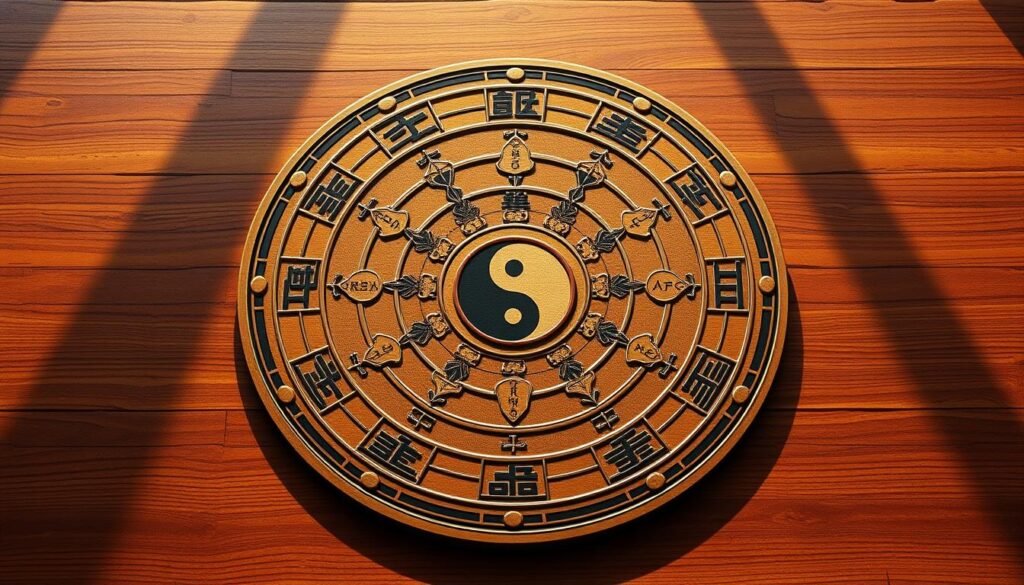
Directional Significance in Altar Placement
Direction plays a significant role in feng shui. For instance, the north direction is often associated with career and life path, while the south is linked to fame and reputation. Consider the direction that aligns with your altar’s intention and place it accordingly. For example, if your altar is for personal growth, placing it in the east, associated with new beginnings, could be beneficial.
Avoiding Energetic Pitfalls in Placement
When choosing a location for your altar, avoid areas with negative or stagnant energy, such as under a staircase, near a bathroom, or opposite a door. These locations can disrupt the flow of positive energy (chi) and diminish your altar’s effectiveness. Instead, opt for a spot that feels peaceful and serene.
Working with Challenging Spaces
If you live in a small apartment or have a challenging layout, don’t worry. You can still create an effective altar. Consider using a corner or a niche that is often underutilized. You can also use a portable or travel altar that can be easily moved to different locations as needed. The key is to find a spot that resonates with your energy and intention.
Essential Materials for How to Build an Altar
Crafting an altar involves gathering materials that align with your intention and energy. The right materials not only enhance the altar’s aesthetic appeal but also amplify its spiritual significance.
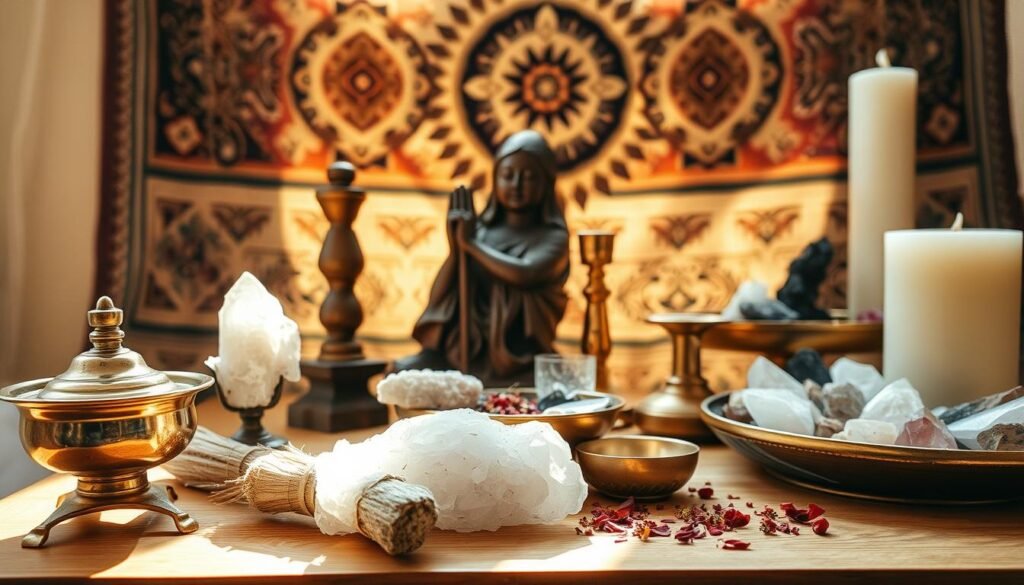
Base Materials and Structures
The foundation of your altar is crucial. You can use a variety of base materials such as wood, stone, or metal. The choice of material should resonate with your intention. For instance, wood is often associated with warmth and stability, while stone can represent durability and earthiness.
Elemental Representations
Incorporating elemental representations can balance and harmonize your altar’s energy. The elements to consider are:
- Earth: Represented by stones, crystals, or plants, earth elements ground the energy.
- Air: Incense, feathers, or bells can symbolize air, promoting mental clarity and communication.
- Fire: Candles or lanterns represent fire, symbolizing passion and transformation.
- Water: Water elements, such as bowls of water or seashells, can represent fluidity and emotional depth.
- Spirit: This can be represented by symbols or objects that connect you to the divine or your higher self.
Personal Power Objects
Personal power objects are items that hold significant meaning or memory, such as heirlooms, personal symbols, or talismans. These objects personalize your altar and strengthen its connection to your intention.
Selecting Items That Resonate with Your Intention
When selecting items for your altar, consider their symbolic meaning and how they resonate with your goals. For example, if your intention is to promote healing, you might include crystals known for their healing properties or images that symbolize health and wellness.
By thoughtfully choosing the materials and objects for your altar, you create a sacred space that not only reflects your personal energy but also supports your spiritual practices and intentions.
Sacred Geometry Patterns for Enhanced Energy
By applying sacred geometry principles, we can significantly amplify the altar’s energy and create a more effective spiritual practice. Sacred geometry involves the use of geometric patterns and shapes that reflect the harmony and order found in nature.
The Flower of Life Pattern and Its Applications
The Flower of Life is a sacred geometric pattern composed of multiple overlapping circles, forming a flower-like design. It symbolizes the unity and interconnectedness of all things. To incorporate this pattern into your altar, you can use it as a decorative element on the altar cloth or as a base for arranging sacred objects.
Incorporating Mandalas in Your Altar Design
Mandalas are intricate geometric designs that represent the cosmos and the interconnectedness of life. They can be used on the altar as a focal point for meditation or as a decorative element to enhance the energy. Creating or using a mandala on your altar can help in achieving a balanced and harmonious energy.
Using Crystals in Geometric Arrangements
Crystals can be arranged in geometric patterns on the altar to amplify their energy. For example, placing crystals in a grid pattern based on sacred geometry can enhance the altar’s effectiveness. The geometric arrangement of crystals can also be used to manifest specific intentions.
The Golden Ratio and Fibonacci Sequence in Altar Layout
The Golden Ratio and Fibonacci Sequence are mathematical principles that reflect the harmony found in nature. Applying these principles to the layout of your altar can create a visually pleasing and energetically balanced space. For instance, the placement of objects according to the Golden Ratio can enhance the aesthetic appeal and energy flow.
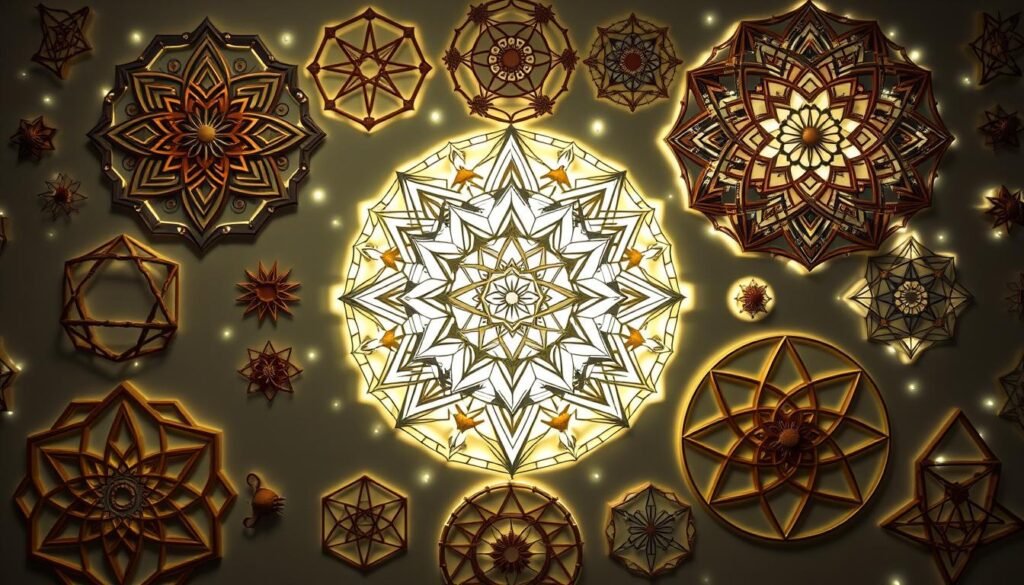
| Sacred Geometry Pattern | Description | Application in Altar Design |
|---|---|---|
| Flower of Life | A pattern of overlapping circles symbolizing unity | Used as a decorative element or base for object arrangement |
| Mandalas | Intricate designs representing the cosmos | Used as a focal point for meditation or decorative element |
| Crystals in Geometric Arrangements | Amplifies crystal energy through geometric patterns | Used to manifest specific intentions or enhance altar energy |
| Golden Ratio and Fibonacci Sequence | Mathematical principles reflecting natural harmony | Applied to create a balanced and aesthetically pleasing altar layout |
Step-by-Step Guide to Constructing Your Altar
To construct an altar that serves as a focal point for positive energy, one must integrate the ancient wisdom of feng shui with the geometric patterns found in sacred geometry. This harmonious blend creates a sacred space that not only looks beautiful but also resonates with positive energy.
Preparing the Space Energetically
Before you start constructing your altar, it’s essential to prepare the space energetically. This involves cleansing the area of any negative energy. You can do this by smudging with sage, using sound cleansing with bells, or simply by setting an intention to clear the space.
Once the space is cleansed, take a moment to reflect on your intention for creating the altar. What do you hope to achieve or manifest? This clarity will guide your decisions as you construct your altar.
Laying the Foundation
The foundation of your altar is crucial as it provides the base upon which all other elements are placed. Choose a surface that resonates with your intention, such as a wooden table for a natural, earthy feel or a glass surface for clarity and purity.
- Consider the height and accessibility of the altar.
- Ensure the surface is clean and clutter-free.
- Use a tablecloth or mat that complements your intention.
Arranging Objects According to Feng Shui Principles
Feng shui principles guide us in arranging objects in a way that maximizes positive energy flow. When arranging your altar, consider the Bagua map and how different areas correspond to different aspects of your life.
For example, placing objects that represent wealth and prosperity in the southeastern area of your altar can enhance financial abundance.
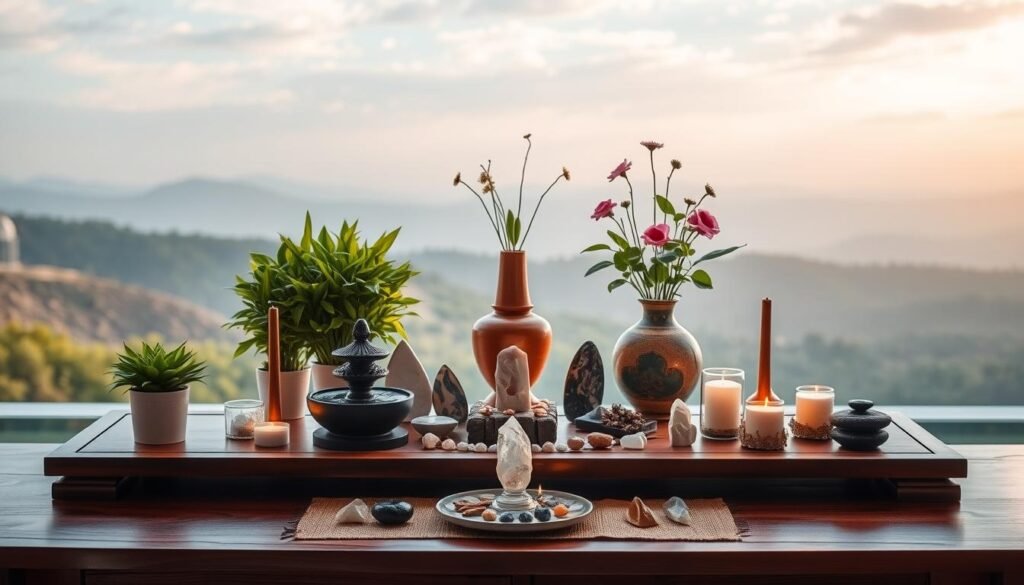
Incorporating Sacred Geometry in the Layout
Sacred geometry patterns, such as the Flower of Life, can be incorporated into your altar design to enhance its energetic potency. These patterns are believed to hold the secrets of the universe and can amplify your intentions.
“Geometry is the foundation of all creation.” – Unknown
You can use crystals, gemstones, or even draw these patterns on your altar cloth to incorporate sacred geometry.
Final Touches for Energy Alignment
The final step in constructing your altar is to ensure that it is energetically aligned with your intention. Take a moment to step back and observe your altar. Make any necessary adjustments to achieve a sense of balance and harmony.
Finally, activate your altar with a simple ritual or ceremony, setting a clear intention for its purpose.
Energizing and Activating Your Altar
The true power of an altar lies not just in its construction, but in its activation and the energy it embodies. Once you’ve carefully set up your altar, it’s essential to breathe life into it through various rituals and practices.
Cleansing Rituals for New Altars
Before activating your altar, it’s crucial to cleanse it of any stagnant or negative energy. This can be achieved through smudging with sage or palo santo, using sound cleansing with bells, or applying a saltwater cleansing ritual. Cleansing prepares your altar for the energies you wish to invoke, ensuring a pure and receptive space.
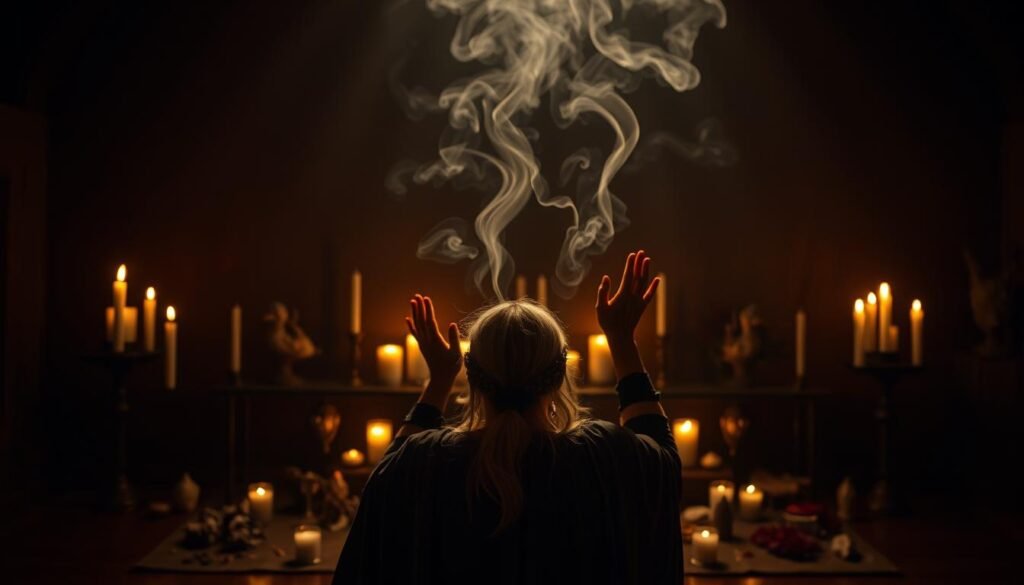
Charging Your Altar with Intention
After cleansing, the next step is to charge your altar with your specific intentions. This involves focusing your thoughts, emotions, and energy on the desired outcomes. Visualization plays a key role here; imagine your intentions manifesting and feel the excitement and gratitude as if they have already occurred.
Sound and Vibrational Activation Techniques
Sound is a powerful tool for activating your altar. Techniques include using singing bowls, tuning forks, or chanting to create vibrational frequencies that resonate with your intentions. These vibrations energize your altar, connecting it with the universal energy field.
“Sound is the vehicle for the spirit.” –
Ceremonial Practices for Dedication
Dedication ceremonies mark the final step in activating your altar. This can involve simple rituals like lighting a candle, offering prayers, or performing a personal ceremony that signifies your commitment to your intentions. These acts seal your intentions and energize your altar, making it a potent tool for manifestation.
By following these steps, you can ensure that your altar is not just a physical structure, but a vibrant, living entity that supports your spiritual journey and manifests your desires.
Maintaining Your Altar’s Energy
The longevity of your altar’s energy depends on consistent care and attention. To keep your sacred space vibrant and effective, it’s essential to implement regular practices that maintain and enhance its energy.
Regular Cleansing Practices
Cleansing your altar regularly is vital to remove stagnant energy and maintain its effectiveness. This can be achieved through various methods, including smudging with sage or sweetgrass, using sound cleansing with bells, or applying moonlight to the altar. Regular cleansing helps to prevent the buildup of negative energy, ensuring your altar remains a positive and uplifting space.
Seasonal Updates and Refreshes
Updating your altar seasonally can help keep its energy fresh and aligned with the current cycle. This can involve changing the objects on your altar to reflect the season, incorporating seasonal flowers, or adjusting the colors used. Seasonal updates can also be an opportunity to reflect on your intentions and adjust them as needed, ensuring your altar remains relevant to your current needs.
Recognizing When Energy Has Stagnated
It’s crucial to be able to recognize when your altar’s energy has become stagnant. Signs of stagnation can include feeling drained or uninspired when near the altar, or noticing dust accumulation on the altar objects. When you identify stagnation, it’s time to take action to revitalize the energy.
Rituals for Renewing Your Altar’s Purpose
Renewing your altar’s purpose involves re-evaluating your intentions and possibly re-consecrating the space. This can be done through a ritual that involves setting new intentions, cleansing the altar, and re-energizing the space. Rituals for renewal help to maintain the altar’s effectiveness and ensure it continues to serve your spiritual needs.
Adapting Altar Practices to Modern Living
Adapting traditional altar practices to suit contemporary living is not only possible but also necessary for many of us. As our lifestyles evolve, so too must our approach to creating and maintaining sacred spaces.
Creating Altars in Small Spaces
For those living in compact apartments or shared accommodations, creating an altar might seem challenging. However, even the smallest dedicated space can be transformed into a meaningful altar. Consider using a corner of a room, a shelf, or even a portable altar that can be set up and taken down as needed.
Discreet Altar Options for Shared Living
In shared living situations, discretion is often key. Opt for altars that blend into the decor or use items that hold personal significance without drawing attention. This approach allows you to maintain your sacred space without it being intrusive.
Digital and Virtual Altar Alternatives
For those who prefer a more modern approach or have limited physical space, digital altars offer a viable alternative. Utilize apps or digital platforms to create virtual altars where you can set intentions, track progress, and connect with like-minded individuals.
Balancing Traditional Practices with Contemporary Life
The key to successfully adapting altar practices lies in finding a balance between tradition and modernity. By embracing the essence of traditional practices while incorporating contemporary elements, you can create a sacred space that is both meaningful and relevant to your current lifestyle.
Conclusion
As we have explored throughout this guide, building an altar is a powerful way to enhance the energy in our living spaces. By applying the principles of feng shui and sacred geometry, we can create a sacred space that fosters good energy and promotes well-being.
We have discussed the importance of determining the altar’s intention, selecting the optimal location, and choosing the right materials. By incorporating sacred geometry patterns and using elemental representations, we can amplify the altar’s energy. Regular maintenance and adaptation to modern living are also crucial to sustaining the altar’s effectiveness.
Now, we encourage you to apply the knowledge gained from this guide and start building your own altar. By doing so, you can experience the benefits of a sacred space that harmonizes with your intentions and enhances the energy in your daily life. With feng shui and sacred geometry guiding your creation, you can cultivate a deeper sense of balance and well-being in your home and life.

